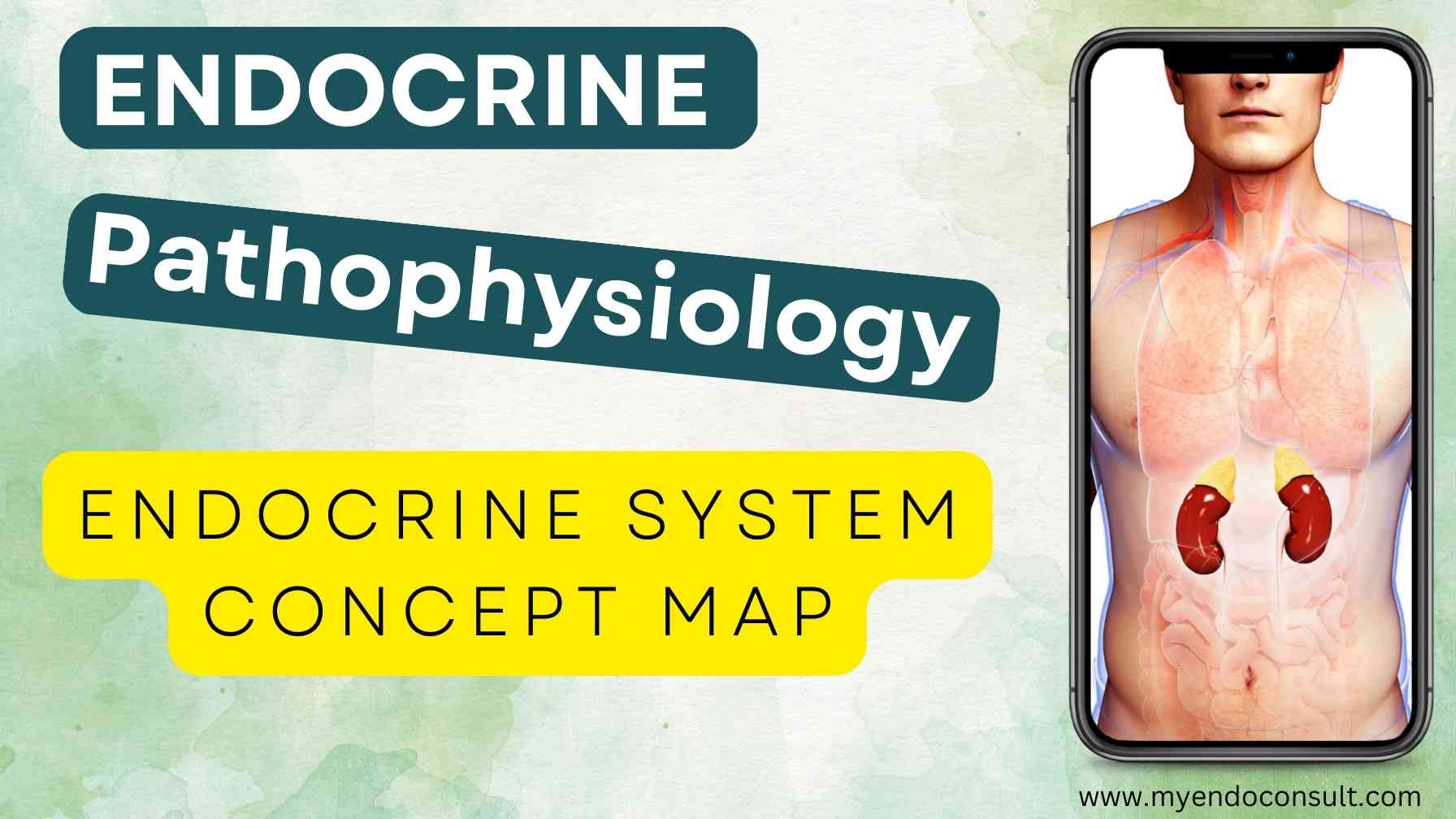
A concept map is a visual aid that can be used by students to learn and organize information. The endocrine system is a complex network of glands and hormones that play an important role in the body’s development, metabolism, and reproduction. A concept map of the endocrine system can help to understand the different hormones and how they interact with each other.
The pituitary gland, for example, produces several hormones that regulate the function of other glands. The thyroid gland produces thyroxine, a hormone that helps to regulate metabolism. The adrenal glands produce cortisol, a hormone that helps the body to respond to stress. Each hormone has a specific function, and the concept map can help to visualize how these hormones work together to maintain the body’s homeostasis.
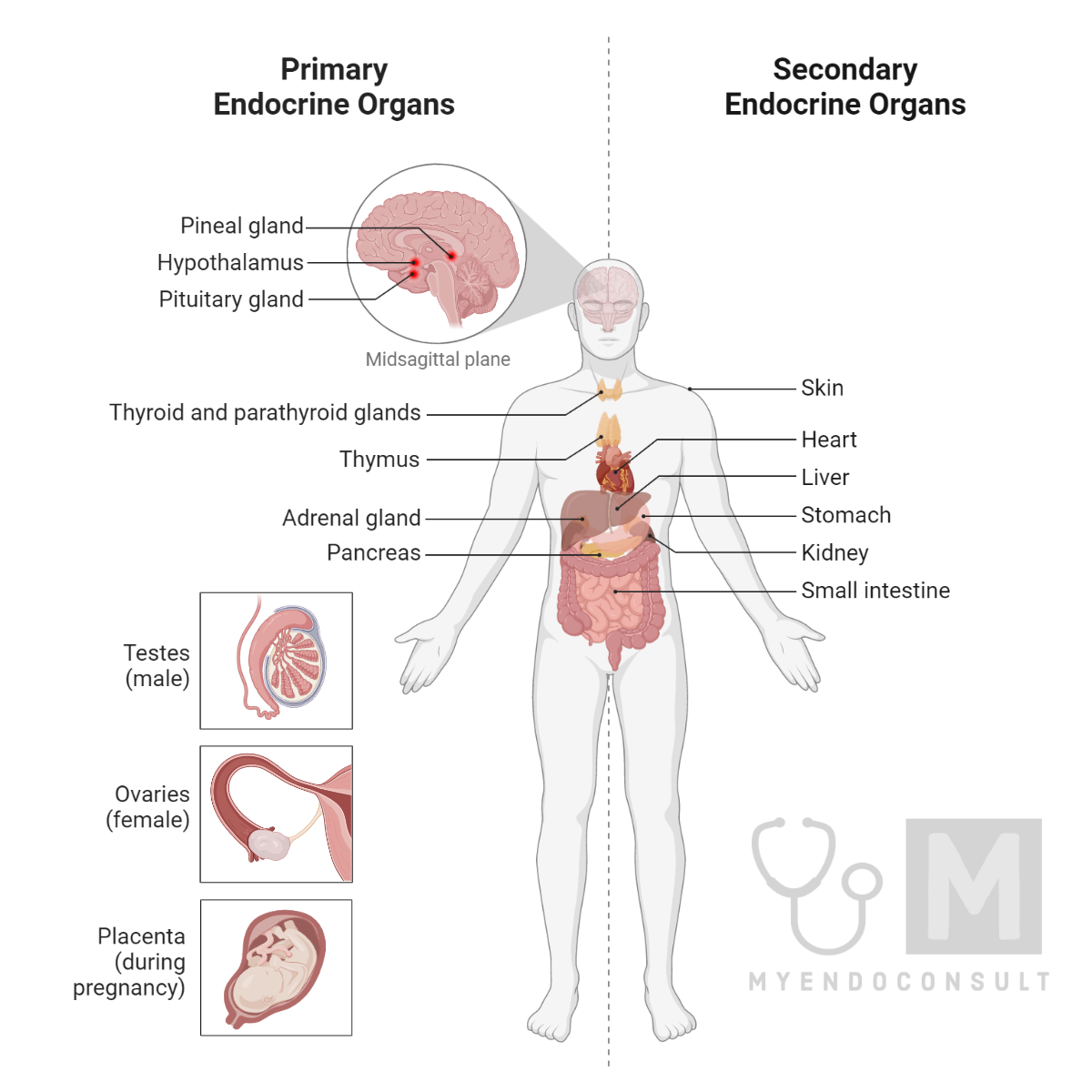
Concept map of the endocrine system
The hormones produced by each traditional or nontraditional gland/organ are shown. Download this hormone concept map in pdf format
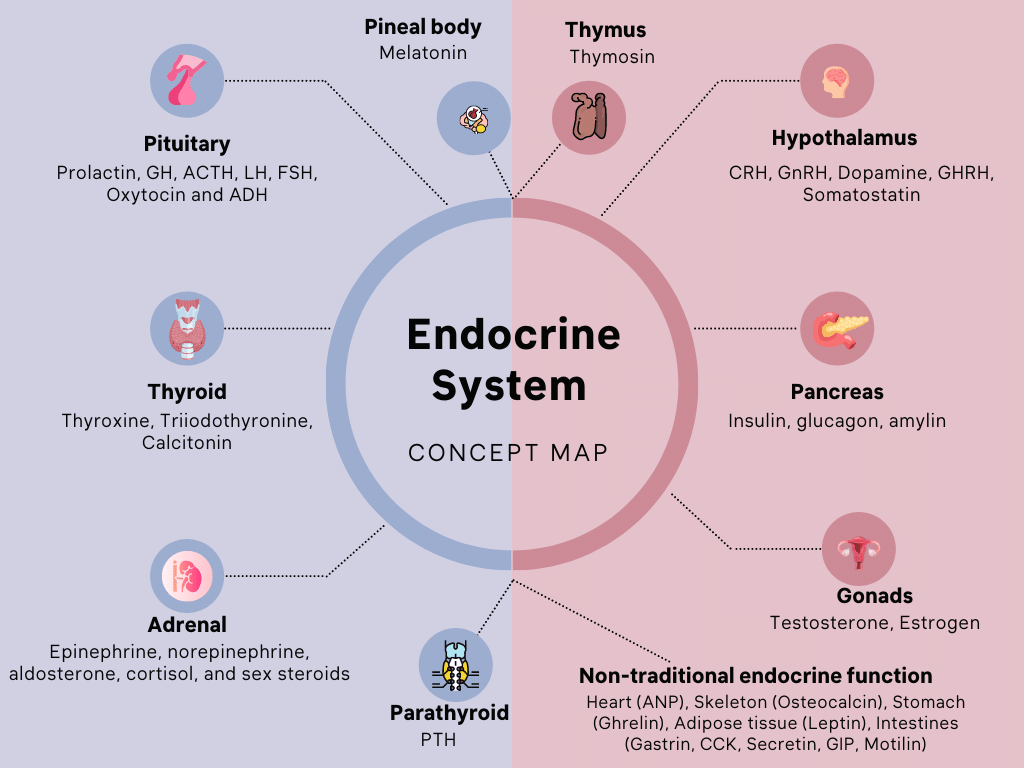
Navigating the endocrine system concept map
The endocrine system consists of both traditional and non-traditional endocrine glands. Traditional endocrine glands include the hypothalamus, pituitary, pancreas, thyroid, parathyroid, adrenal, and gonadal glands.
Non-traditional endocrine glands include the pineal gland, thymus, skeleton, heart, stomach, intestines, and adipose tissue. Each of these glands or organs with intrinsic endocrine function produces a unique hormone or group of hormones that affect specific bodily functions.
Hypothalamus
The hypothalamus is a small but important region of the brain that regulates a variety of essential functions, including body temperature, hunger, thirst, and fatigue. The hypothalamus is located just below the thalamus, and it is connected to the pituitary gland via the pituitary stalk. Together, the hypothalamus and pituitary gland form the neuroendocrine system, which controls hormone release throughout the body. The hypothalamus receives input from various regions of the brain and nervous system, as well as from hormones and sensors in the body. This information is used to regulate a number of processes, including eating, drinking, sleeping, and reproduction. The hypothalamus is essential for maintaining homeostasis within the body, and it plays a vital role in overall health and well-being.
The pituitary gland
The pituitary gland is a small yet vital endocrine gland that is responsible for producing a number of hormones that regulate various bodily functions. It is located at the base of the brain, just below the hypothalamus. The pituitary gland consists of two main sections: the anterior pituitary and the posterior pituitary. The anterior pituitary produces six hormones: growth hormone, thyroid-stimulating hormone, adrenocorticotropic hormone, prolactin, follicle-stimulating hormone, and luteinizing hormone.
These hormones play important roles in regulating growth, metabolism, reproductive function, and stress response. The posterior pituitary produces two hormones: oxytocin and antidiuretic hormone. Oxytocin is involved in childbirth and lactation, while antidiuretic hormone helps to regulate water balance in the body. Together, these hormones help to keep the body functioning properly.
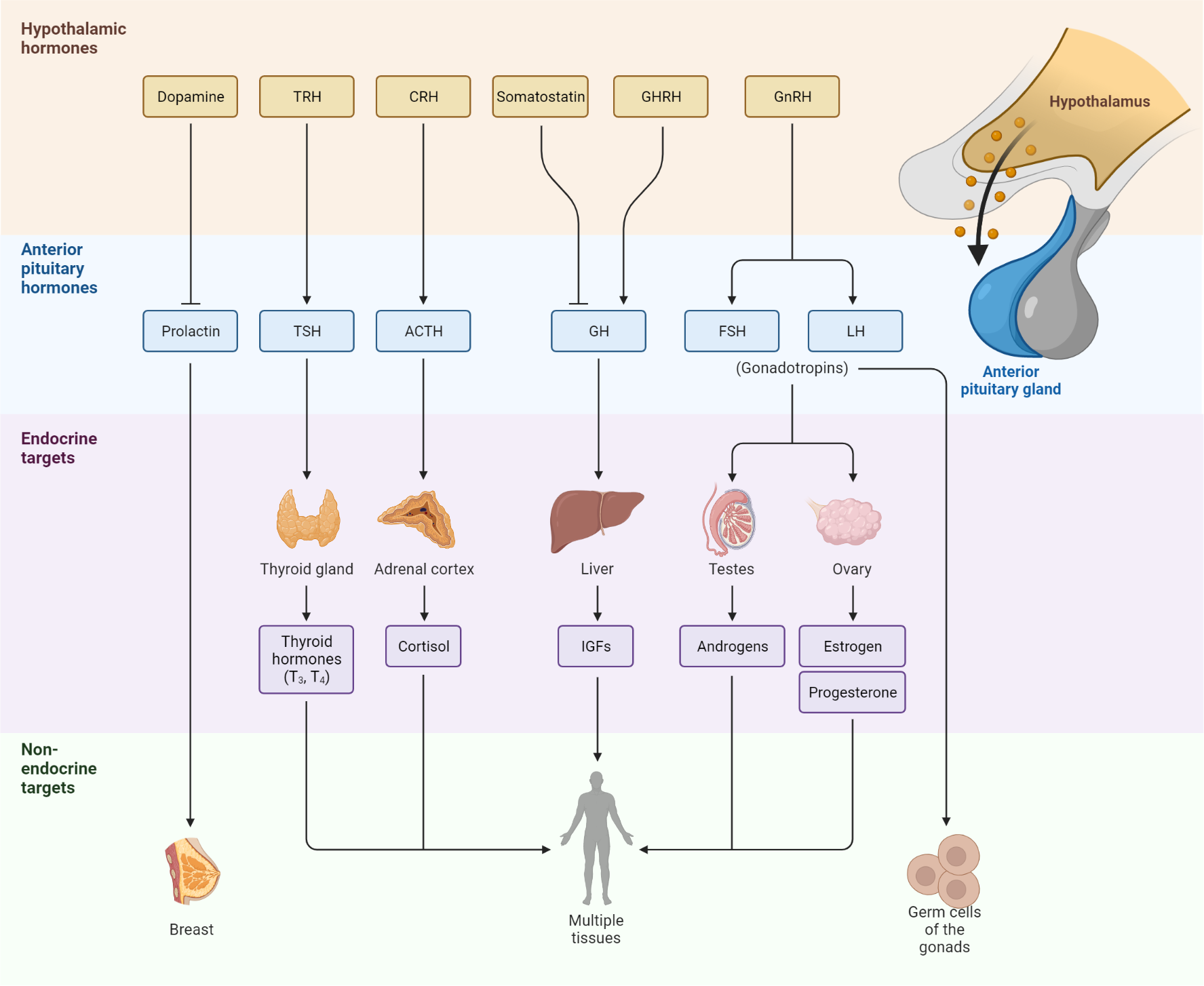
The thyroid gland
The thyroid is a small, butterfly-shaped gland that lies in the front of the neck, just below the thyroid cartilage. The thyroid’s main function is to produce thyroid hormones, which play a critical role in regulating the body’s metabolism. These hormones help to control heart rate, blood pressure, body temperature, and weight. The thyroid also helps to regulate the body’s use of calcium and phosphorus.
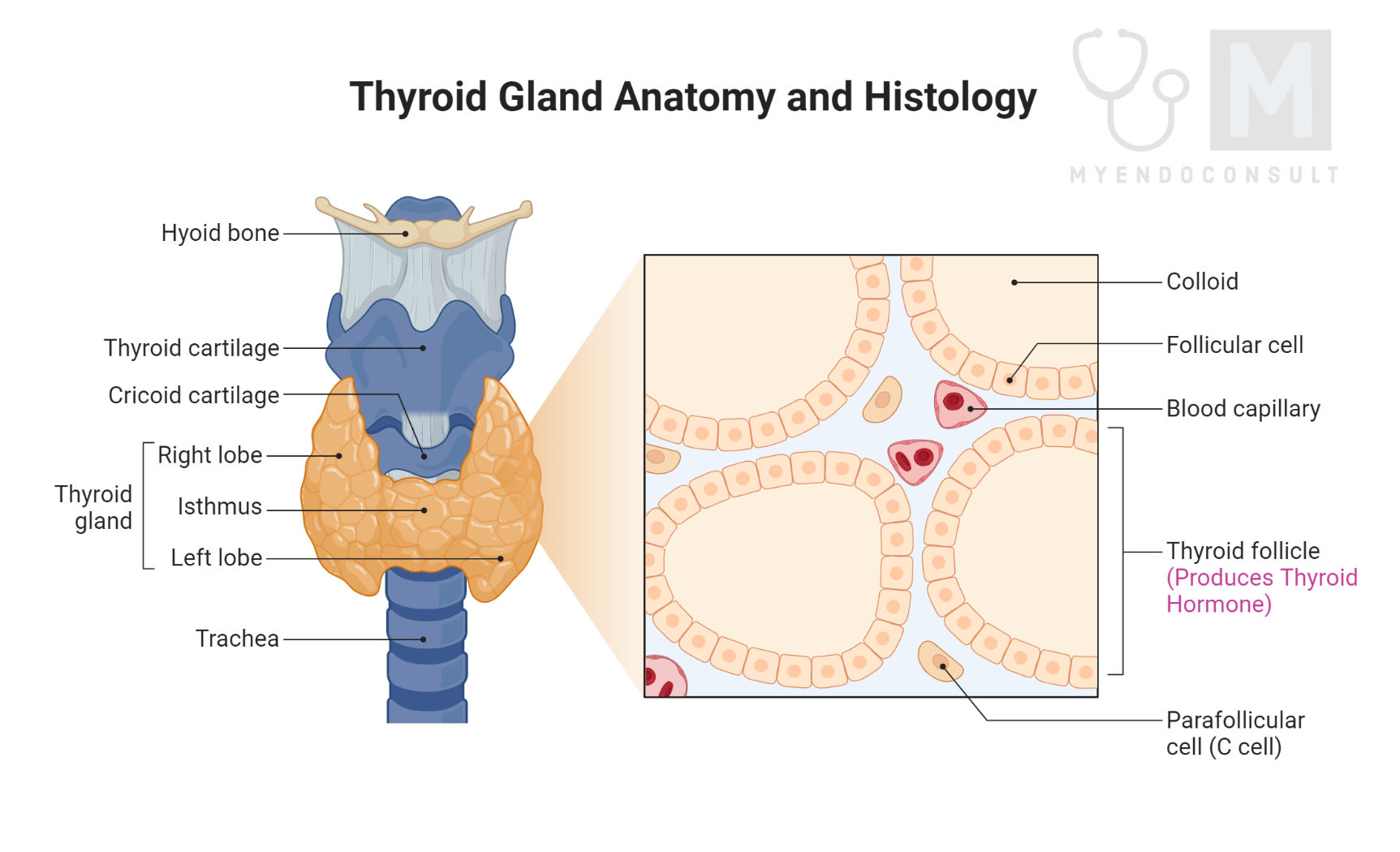
Adrenal gland
The adrenal gland is a small, triangular-shaped gland that sits on top of each kidney. The adrenal gland consists of two parts: the medulla and the cortex. The medulla is responsible for producing and releasing hormones that help to regulate the body’s fight-or-flight response, such as epinephrine and norepinephrine.
The cortex is responsible for producing and releasing hormones that help to regulate metabolism, such as cortisol and testosterone. Together, these two parts of the adrenal gland play an important role in maintaining homeostasis within the body.
Parathyroid gland
The parathyroid gland is a small endocrine gland that is located in the neck. The primary function of the parathyroid gland is to regulate levels of calcium in the blood. Calcium is essential for many body functions, including muscle contraction, nerve transmission, and blood clotting. When blood calcium levels become too low, the parathyroid gland releases a hormone called parathyroid hormone (PTH).
PTH increases levels of calcium in the blood by stimulating the release of calcium from bone, increasing calcium absorption from the intestine, and reducing calcium excretion by the kidneys. As a result, PTH helps to maintain normal levels of calcium in the blood, which is essential for health.
Pineal body
The pineal body is a small endocrine gland located in the brain. It produces melatonin, which helps to regulate the sleep-wake cycle. Melatonin production is linked to exposure to light, and levels of the hormone are highest at night. The pineal gland also plays a role in controlling the body’s circadian rhythms. Circadian rhythms are daily patterns that govern physiological functions such as temperature, hormone release, and sleep. The pineal gland helps to keep these functions on track by responding to changes in light exposure. For example, when it gets dark outside, the pineal gland increases melatonin production to help prepare the body for sleep.
Gonads
The gonads are a pair of organs that produce gametes, the cells needed for sexual reproduction. In males, the gonads are the testes, which produce sperm. In females, the gonads are the ovaries, which produce eggs. The gonads also produce hormones, which help to regulate the reproductive system. For example, testosterone, a hormone produced by the testes, helps to stimulate sperm production. Estrogen and progesterone, hormones produced by the ovaries, help to regulate the menstrual cycle. The gonads are essential for sexual reproduction and play an important role in maintaining reproductive health.

Pancreas
The endocrine pancreas is a small region in the pancreas that produces hormones. These hormones are released into the bloodstream and regulate many important functions in the body, such as blood sugar levels, metabolism, and growth. The endocrine pancreas is made up of two types of cells: beta cells and alpha cells. Beta cells produce insulin, a hormone that helps to regulate blood sugar levels. Alpha cells produce glucagon, a hormone that helps to raise blood sugar levels. In addition to these two types of cells, the endocrine pancreas also contains neuroendocrine cells, which produce hormones that regulate appetite and stress levels.

Nontraditional endocrine system
The concept of the nontraditional endocrine system refers to organs that are not classically known as endocrine glands. The endocrine function of the skeleton is to produce osteocalcin, which regulates insulin production and blood sugar levels. The stomach produces ghrelin, which regulates hunger and appetite. Adipose tissue produces leptin, which regulates energy balance and body weight. The heart produces atrial natriuretic peptide, which regulates blood pressure and fluid balance.
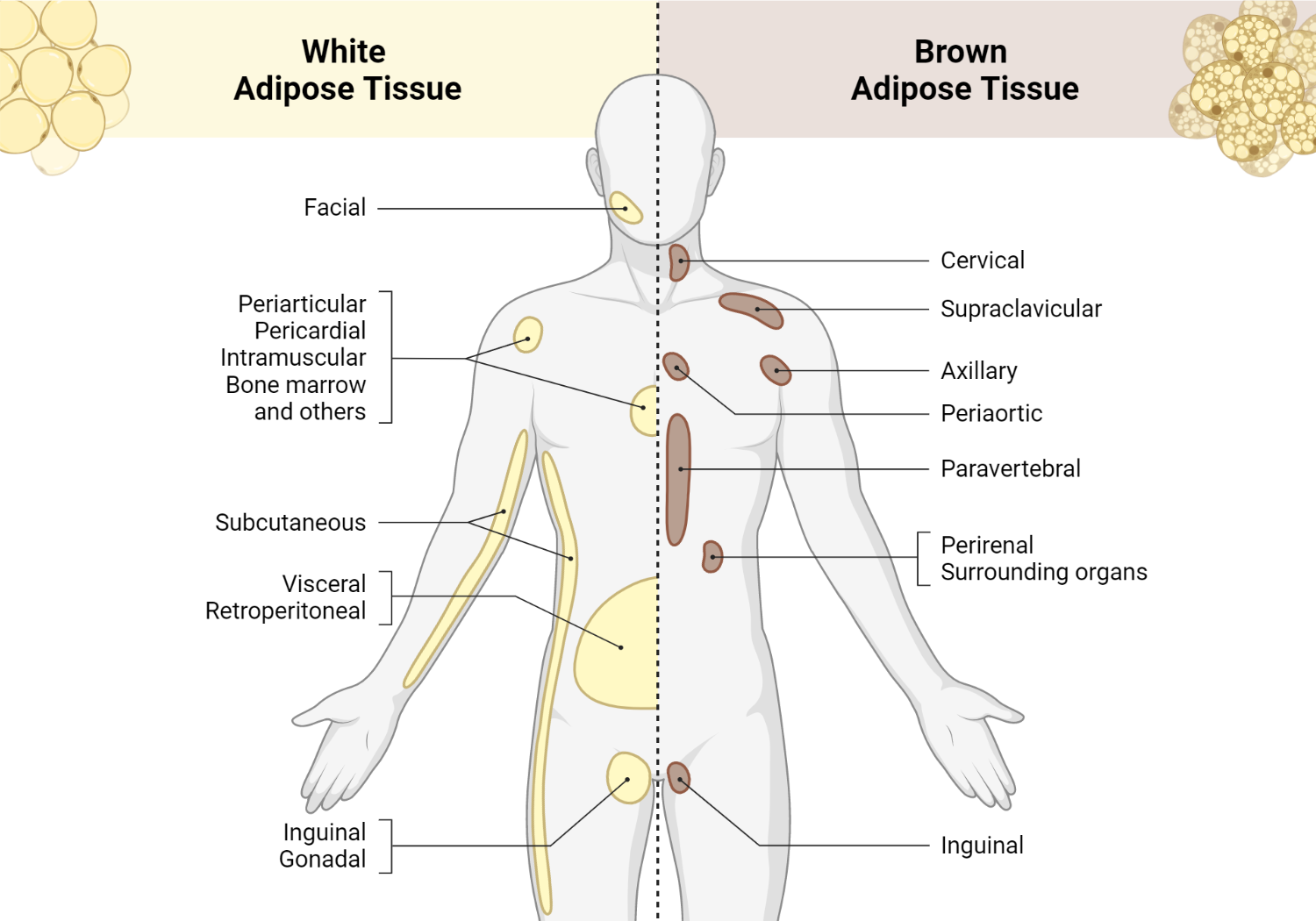
Images(s) Courtesy
MyEndoConsult
Kindly Let Us Know If This Was helpful? Thank You!


